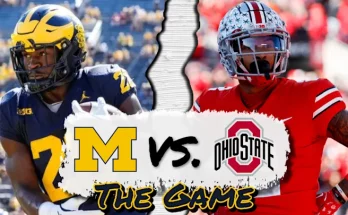The recent verdict in the case involving five former Hockey Canada players—Carter Hart, Alex Formenton, Cal Foote, Dillon Dubé, and Michael McLeod—has sent shockwaves throughout the hockey community and beyond. The players were acquitted of sexual assault charges, a development that has been followed with intense public scrutiny and media coverage. This article delves deeply into the background of the case, the trial proceedings, the reactions from various stakeholders, and the broader implications of the verdict in the context of sports, justice, and society.
The case initially emerged as part of a larger investigation into allegations against members of Hockey Canada, an organization that governs the sport nationally and holds considerable influence over hockey in Canada. The accusations stemmed from an incident alleged to have occurred several years ago, involving claims of sexual misconduct. Given the high-profile nature of the accused athletes—who had careers and reputations intertwined with the sport’s highest echelons—the case attracted widespread attention, not only from sports fans but also from advocates for victims of sexual violence and those concerned with the culture of professional sports.
Throughout the trial, prosecutors presented their case with an aim to establish beyond a reasonable doubt that the accused had engaged in sexual assault. The defense teams for Hart, Formenton, Foote, Dubé, and McLeod, however, vigorously contested the allegations, challenging the credibility of the claims and emphasizing the lack of concrete evidence. The trial process was lengthy and complex, involving testimonies from multiple witnesses, expert analysis, and detailed examination of timelines and interactions.
One of the key elements in the trial was the consideration of consent, a critical and often contentious point in sexual assault cases. The defense argued that any interaction was consensual and that there was no intention or act of assault. The prosecution, on the other hand, attempted to show that the victim’s account clearly indicated coercion and non-consent. Ultimately, after carefully weighing the evidence and testimonies, the jury or judge found that the prosecution failed to meet the burden of proof necessary for a conviction, leading to the verdict of not guilty for all five former players.
The not guilty verdict does not necessarily imply that the events in question did not occur, but rather that the evidence presented was insufficient to conclusively prove guilt in a court of law. This distinction is important to understand as it reflects the fundamental principles of the justice system, where the accused are presumed innocent until proven otherwise and the burden of proof rests firmly on the prosecution.
Reactions to the verdict were immediate and varied. Many supporters of the accused celebrated the outcome, viewing it as a vindication of the players’ innocence and a relief from the personal and professional turmoil that the allegations had caused. Friends, family members, and fans expressed their support publicly, underscoring the emotional toll the accusations and the trial process had taken on the players. On the other side, some advocates and members of the public expressed disappointment and frustration, emphasizing the broader issue of sexual violence in sports and society, and the challenges victims face when seeking justice.
The case also reignited conversations around Hockey Canada’s institutional culture. Over recent years, the organization has faced criticism for how it handles allegations of misconduct and its overall governance structure. The spotlight on the current case added pressure on Hockey Canada to enhance transparency, accountability, and support mechanisms for victims. The acquittals, while clearing the individual players legally, did not end public scrutiny of the institution itself and its role in fostering a safe environment within the sport.
Another aspect that emerged prominently was the impact on the careers of the accused. Before the allegations became public, Carter Hart, Alex Formenton, Cal Foote, Dillon Dubé, and Michael McLeod were seen as rising stars with promising futures in professional hockey. The charges, regardless of the verdict, cast shadows on their reputations and affected their professional trajectories. Sponsorship deals, team contracts, and public perception all became complicated matters. The acquittal may open the door for rehabilitation of their careers, but the stigma attached to such allegations can persist in the court of public opinion for years.
This case also highlights the delicate balance between ensuring justice for victims of sexual violence and protecting the rights of the accused. Sexual assault allegations are serious and must be treated with the utmost care and sensitivity. At the same time, the legal process requires evidence and due process to prevent miscarriages of justice. The tension between these imperatives often results in complex, high-stakes trials that capture national attention and spark polarized public debate.
From a societal perspective, the verdict serves as a reminder of the challenges inherent in addressing sexual violence, especially within high-profile environments like professional sports. There is an increasing awareness of the need for cultural change in sports organizations worldwide, with a focus on education, prevention, and accountability. The public expects governing bodies not only to enforce rules and discipline but also to lead cultural shifts that protect athletes, fans, and the broader community from harm.
In terms of legal precedent, the case may influence how future allegations involving athletes and sports organizations are handled. It underscores the importance of thorough investigations, the need for clear policies within sports institutions, and the challenges in prosecuting cases where evidence can be circumstantial or where incidents involve complex interpersonal dynamics.
Moreover, the media coverage of the case reflected the evolving role of journalism in reporting on sensitive issues like sexual assault. The balance between informing the public and respecting the privacy and dignity of all parties is delicate. Some coverage was praised for its thoroughness and sensitivity, while other aspects faced criticism for sensationalism or bias, illustrating the ongoing challenge for media outlets in such cases.



